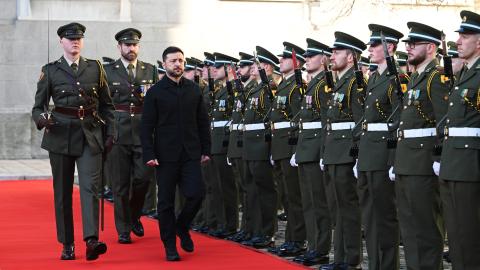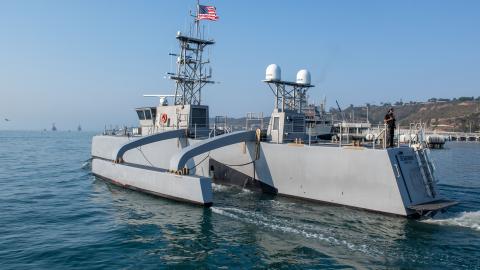Executive Summary
- Drone warfare update: Russian Zala Lancet drones preyed on Ukrainian robotic naval warfare assets, threatening Ukraine’s thus-far successful Black Sea campaign.
- Ukraine pushes to save Pokrovsk: Kyiv rushed elite combat formations to defend Pokrovsk as the embattled city nears collapse.
- Battlefield assessment: Ukrainian defenses around Kupiansk also faced growing pressure, with Russian forces conducting overwhelming drone warfare operations and infiltrating the city.
- What to watch for: (1) Will Pokrovsk fall? (2) How will Russian glide bombs affect the war? (3) What’s next in Kupiansk?
1. Battlefield Assessment
Ukrainian forces have committed significant effort to maintaining layered defensive combat operations in and around the most critical current flashpoint of the war, Pokrovsk.
In recent weeks the city has faced continuous Russian offensive waves. The Ukrainian military is now trying to pinpoint the exact locations of Russian assault groups and halt their movements, a process known in military terminology as fixing. These fixing operations seek to prepare and shape the battlefield for potential Ukrainian counteroffensives should Ukraine break the momentum of Russia’s piercing moves.
While Kyiv’s official statements have denied that Pokrovsk could soon fall, Ukrainian combat formations are at risk of complete encirclementin the city. Open-source visuals of tactical engagements suggest that heavy fighting is raging throughout the area. Fighting has escalatedin Myrnohrad on the northern flank of Pokrovsk. The Ukrainian General Staff has rushed reinforcements to the area, including air assault combat formations under the 7th Rapid Response Corps and a notable drone warfare unit, the 425th Separate Assault Regiment (known as “Skala”). To boost morale, Ukrainian President Volodymyr Zelenskyy visited the 7th Rapid Response Corps’ command.
In a parallel effort, Ukraine’s Main Intelligence Directorate (GUR), led by General Kyrylo Budanov, has also deployed elite warfighting formations to the area. Last week GUR forces raided critical areas and conducted air cavalry operations—using rotary-wing aircraft to give land warfare formations air support and increase their maneuverability. Budanov’s troops, led by the Timur Special Unit, are focused on maintaining lines of communication and preventing Russian units from attaining fire control over the logistics routes of Ukraine’s defensive lines. The Russian military has long targeted Ukraine’s logistics in the area.
Russian forces also gained ground elsewhere in the battle space. In Dnipropetrovsk Oblast, Russian units targeted a concentrated Ukrainian force with a missile salvo, causing high casualties. And in Kupiansk, the Russian military maintained an offensive footing with a highly attritional operational tempo.
Ukrainian defenses face growing pressure from Russian forces operating north and east of Kupiansk, where Moscow has effectively used drones for reconnaissance and forward fire and used infantry to penetrate Ukrainian lines, a familiar concept of employment (CONEMP) in this war. First-person-view drones controlled via fiber-optic cables were especially active in this sector last week. These developments suggest that Ukraine’s hold on Kupiansk—which appears to be a Russian strategic objective—is under significant strain.
On the other hand, Ukraine’s long-range strike deterrent continued to play a crucial role in the conflict. Kyiv once again struck Russian hydrocarbon facilities, particularly refining infrastructure and petrochemical plants, with drone and missile salvos. According to a GUR source, Ukrainian drones hit a Lukoil oil refinery in Russia’s Nizhny Novgorod Oblast overnight on November 4.
Open-Source Imagery of an Alleged Lukoil Refinery Burning
Screenshot via the Kyiv Independent.
2. Russian Drones Hit Ukrainian Unmanned Naval Platforms
Russia has been using Zala Lancet kamikaze drones to attack Ukrainian robotic naval warfare assets in the Black Sea. Recently, a Russian Lancet targeted a Ukrainian Magura-7 unmanned platform in the waters off the occupied Crimean Peninsula.
Until recently, Russian forces rarely employed Lancet drones against Ukrainian drone boats. But an assessment of the Lancet’s recent kill record suggests that Russia has begun to use the munition against a wider array of targets, from Leopard-2 main battle tanks to howitzers.
Russian Troops Prepare to Deploy a Lancet Drone
Screenshot via the Institute for Science and International Security.
Russian forces have reportedly equipped one variant of the drone, the Lancet-3, with onboard artificial intelligence features that enhance image and data processing and improve target acquisition. An examination of Lancet wreckage obtained in Ukraine revealed a Nvidia Jetson TX2 module—a US-designed, compact, high-performance AI development board. This discovery indicates that Russia’s upgraded drone possesses substantial processing capabilities. Such modules can improve automated target recognition, transmit potential targets to a human controller, and assist in guiding a precision strike. Moreover, available videos have revealed that Russian forces have also equipped Lancets with antitank mines.
Kyiv’s use of robotic warfare assets to inflict heavy casualties on the Russian Black Sea Fleet has been one of the war’s major success stories. A viable Russian campaign to hunt down Ukrainian naval drones with Lancets, therefore, threatens Ukraine’s most important tactical assets in the Black Sea.
3. What to Monitor in the Coming Weeks
1. The potential fall of Pokrovsk: The situation in the long-embattled city is worsening by the day. Signs that Russia has encircled Ukraine’s principal combat formations or made a major breach in the city’s lines of defense could suggest an impending collapse.
2. Russian glide bomb usage: The Russian Aerospace Forces used a record number of glide bombs in October. It released more than 5,300 of these potent munitions onto Ukrainian targets, often indiscriminately. Monitoring Russia’s glide bomb usage in November and December will be critical to assessing the threat these munitions pose to Ukraine.
3. The fight for Kupiansk: The situation in Kupiansk is not as precarious as that in Pokrovsk. But a drastic change in the force-on-force and force-to-terrain ratios around the city could quickly turn the tide. Therefore any large-scale movement of Russian reinforcements to this area bears close monitoring.


















